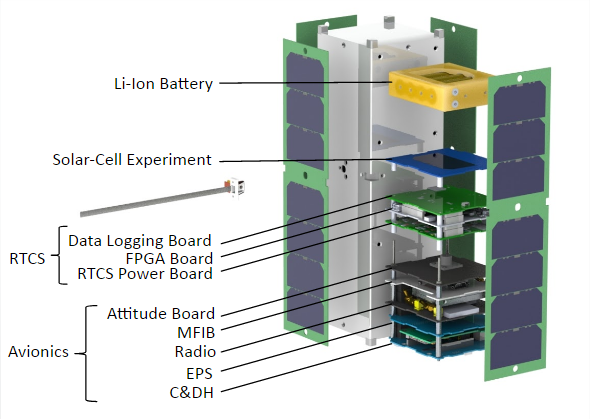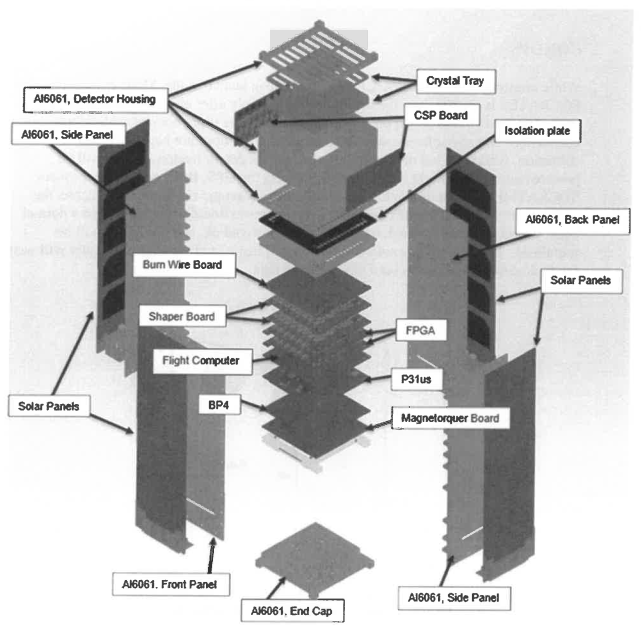
Apart from 3729 kg of cargo bound for the International Space Station, CRS 12 was also the launch platform for ELaNa 25A, the latest in NASA’s ongoing university space access program, including missions from Montana and Minnesota: RADSAT-U and SOCRATES.
RADSAT-U

How can you build a computer you can count on in deep space, where stray radiation can randomly crash the average PC? RADSAT-U, a 3U cubesat project from Montana State University, aims to demonstrate a radiation-tolerant computer hardware architecture that users can count on in space, an environment that’s never been kind to silicon wafers.
The final push to complete the computer experiment was lead by Chris Major, a computer engineer and Ph.D candidate in electrical engineering at Montana State, who picked up the effort from the previous student design team in the early months of 2019, running up to final completion and delivery for payload integration a few months before the launch.
In addition to the primary computing experiment, a second experiment aboard RADSAT-U studies how the effects of radiation environment affect solar cells. An additional solar cell of the same type used on the craft’s exterior is mounted inside the craft. Montana State undergraduates will study the experiment’s results.
Data from the craft will be relayed directly to the university in quarter-kilobyte packets transmitted over amateur radio frequencies. After Montana State’s SSEL calculates the pass time, a team member will be on hand to collect the data packets when the craft passes overhead.
Three members of the RADSAT-U team, including Major, attended the launch at Wallops Island, Virginia.
RADSAT-U is expected to be in orbit for up to two and a half years. The mission was student-built at Montana State University under the supervision of Dr. Brock LaMeres, with technical support from the university’s Space Science Engineering Laboratory and supplemental expertise from the Montana Space Grant Consortium.
Aside from its recent success in the ELaNa program, Montana State University is also one of 12 universities working with NASA to reach the surface of the moon along with one of the robotic landers in the Commercial Lunar Payload Services program.
SOCRATES

SOCRATES is a project from the University of Minnesota-Twin Cities, a 3U cubesat that includes a gamma ray burst detector with a unique purpose.
How can spacecraft navigate without GPS in the far reaches of the solar system? SOCRATES, from the University of Minnesota-Twin Cities, is a 3U cubesat carrying an experiment to answer that question. At its heart are four bricks of Thallium-doped Caesium Iodide, which glow in the dark whenever a cosmic ray happens to pass.
Those flashes of light can become space-GPS by taking careful measurements and referencing the satellite’s highly accurate onboard clock, then exchanging information with other similar observatories. As members join the network, each spacecraft can determine its position relative to the others, based on the time each of them detected the gamma ray burst.
SOCRATES is expected to be in orbit for just over two years. A companion satellite, EXACT, is hoped to be launched while SOCRATES is still in space. Both are projects of the UMN Smallsat team supervised by Dr. Demoz Gebre-Egziabher and Dr. Lindsay Glesener at the University of Minnesota-Twin Cities Aerospace Engineering and Mechanics Department.

One thought on “Cygnus NG-12 carries regional cubesats to orbit”
Comments are closed.